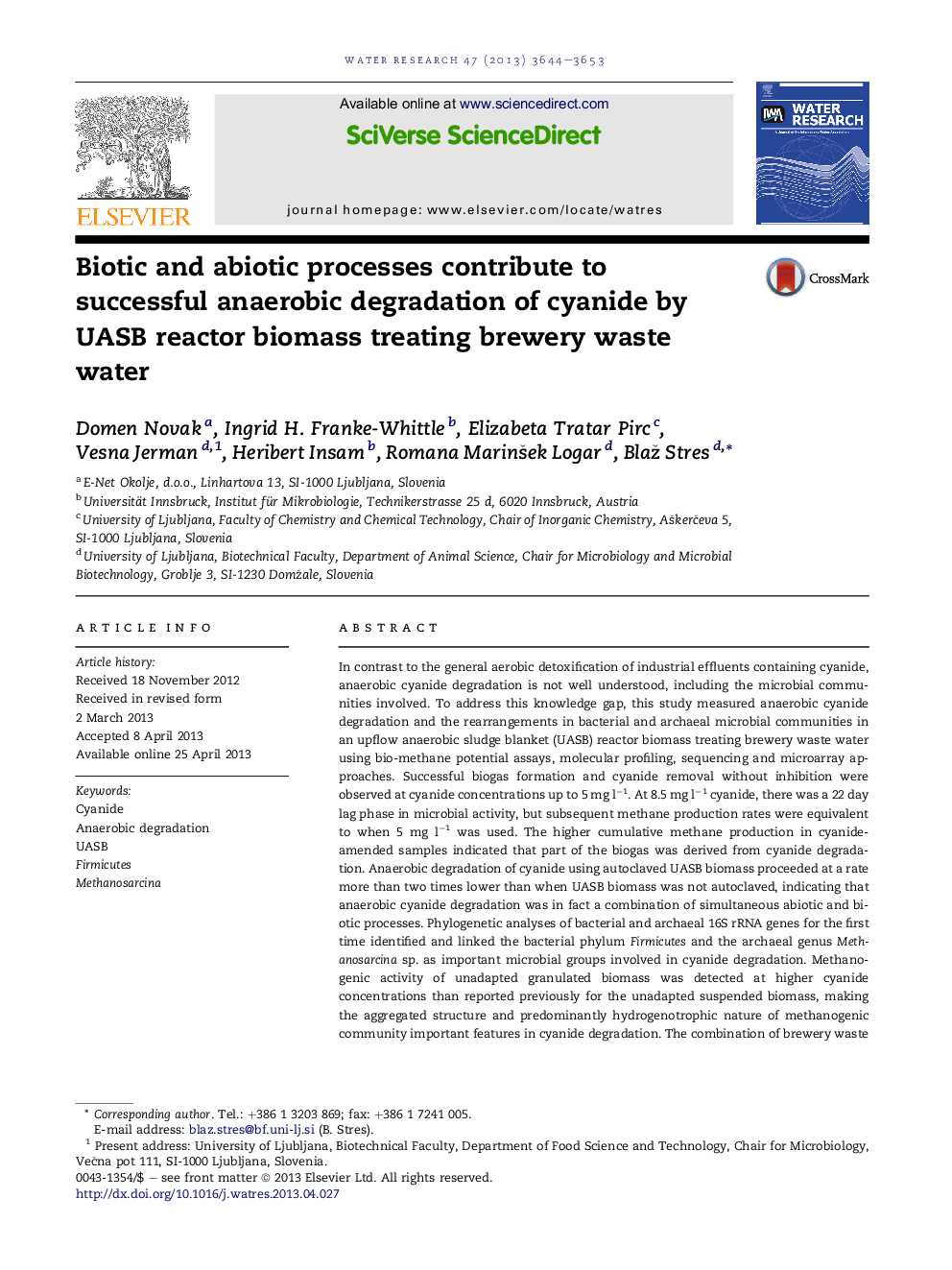| کد مقاله | کد نشریه | سال انتشار | مقاله انگلیسی | نسخه تمام متن |
|---|---|---|---|---|
| 4482175 | 1316850 | 2013 | 10 صفحه PDF | دانلود رایگان |

• Granulated biomass degraded higher cyanide concentrations than suspended biomass.
• Biotic and abiotic processes compete simultaneously in anaerobic cyanide degradation.
• Firmicutes and Methanosarcina were linked to anaerobic cyanide degradation.
• Hydrogenotrophic methanogens were indeed less sensitive to cyanide toxicity.
• Substrate combination is of interest for industrial scale anaerobic cyanide degradation.
In contrast to the general aerobic detoxification of industrial effluents containing cyanide, anaerobic cyanide degradation is not well understood, including the microbial communities involved. To address this knowledge gap, this study measured anaerobic cyanide degradation and the rearrangements in bacterial and archaeal microbial communities in an upflow anaerobic sludge blanket (UASB) reactor biomass treating brewery waste water using bio-methane potential assays, molecular profiling, sequencing and microarray approaches. Successful biogas formation and cyanide removal without inhibition were observed at cyanide concentrations up to 5 mg l−1. At 8.5 mg l−1 cyanide, there was a 22 day lag phase in microbial activity, but subsequent methane production rates were equivalent to when 5 mg l−1 was used. The higher cumulative methane production in cyanide-amended samples indicated that part of the biogas was derived from cyanide degradation. Anaerobic degradation of cyanide using autoclaved UASB biomass proceeded at a rate more than two times lower than when UASB biomass was not autoclaved, indicating that anaerobic cyanide degradation was in fact a combination of simultaneous abiotic and biotic processes. Phylogenetic analyses of bacterial and archaeal 16S rRNA genes for the first time identified and linked the bacterial phylum Firmicutes and the archaeal genus Methanosarcina sp. as important microbial groups involved in cyanide degradation. Methanogenic activity of unadapted granulated biomass was detected at higher cyanide concentrations than reported previously for the unadapted suspended biomass, making the aggregated structure and predominantly hydrogenotrophic nature of methanogenic community important features in cyanide degradation. The combination of brewery waste water and cyanide substrate was thus shown to be of high interest for industrial level anaerobic cyanide degradation.
Figure optionsDownload high-quality image (172 K)Download as PowerPoint slide
Journal: Water Research - Volume 47, Issue 11, 1 July 2013, Pages 3644–3653